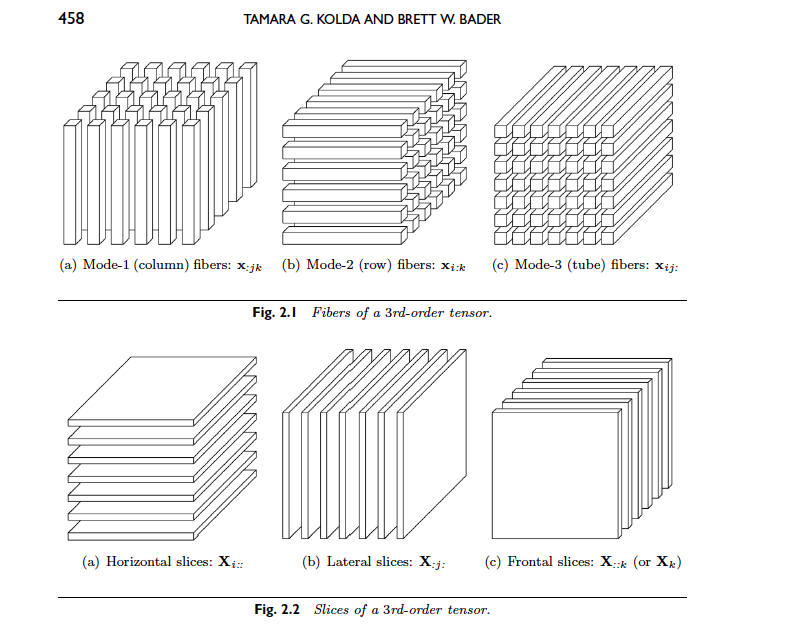Section1Introduction
A tensor is a multidimensional array, where the order of tensor denotes the dimension of the array. For example, a scalar is simply an order-0 tensor, a vector order-1, a matrix order-2, and any tensor with order-3 or greater is described as a higher order tensor. For this paper I will be focusing on the simplest higher-order tensor, the order-3 tensor, which can be visualized as a sort of Rubik's cube.
In discussing higher order tensors there is some fundamental language that must first be understood. Analogous to rows or columns of a matrix, 3rd-order tensors have fibers. Since there are 3 dimensions to a 3rd-order tensor there are 3 types of fibers generated by holding two of the indexes constant. These fibers are named similarly to the vector elements of a matrix. There are row, column, and tube fibers, which are visualized in Figure 2.1 from Kolda and Bader (2009)[4.3]. In addition to fibers, 3rd-order tensors also have slices generated by holding one of the indexes constant. The slices resemble matrices that, when stacked together, form a tensor. A 3rd-order tensor can be sliced in 3 directions producing horizontal, lateral, and frontal slices which are visualized in Figure 2.2 from Kolda and Bader (2009)[4.3].

In quantum chemistry 3rd-order tensors arise naturally as the the outer product of a matrix and a vector, which occurs when calculating spectroscopic properties [4.2]. In dealing with 3rd-order tensors it is difficult to expand on standard matrix manipulations such as rotation by multiplication with a rotational matrix. To perform these manipulations on higher-order tensors the tensor has to be decomposed into vector or matrix components that can be manipulated and then used to reform a new, rotated tensor. This can be accomplished by performing a CANDECOMP/PARAFAC (CP) decomposition. This process is a nontrivial task and commonly utilizes an alternating least squares (ALS) method [4.4]. While the ALS method is relatively easy to implement as an expanded version of the standard least squares method, it does not always converge on a solution causing computational difficulties [4.3]. For this reason many more computational methods have been developed for dealing with special cases involving 3rd-order tensors. In this paper, I lay out some of the common properties of third order tensors, discuss Higher Order SVD and CP decompositions, and how these apply to problems in quantum chemistry.